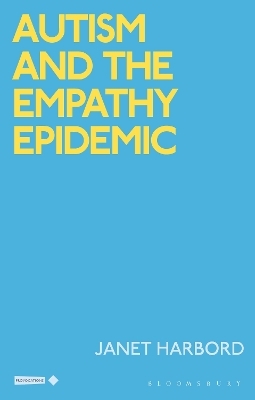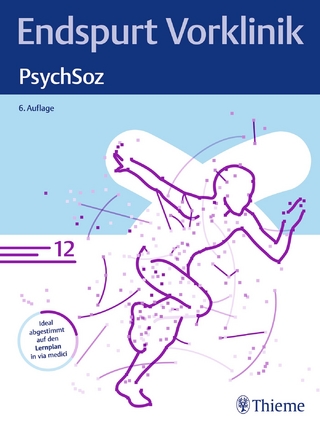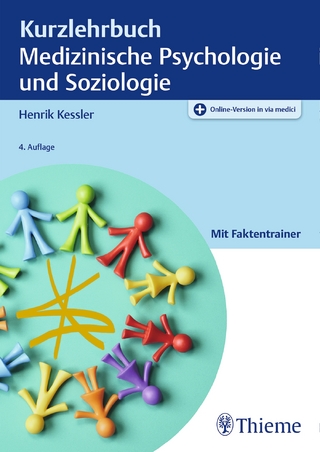
Autism and the Empathy Epidemic
Seiten
2025
Bloomsbury Academic (Verlag)
978-1-350-34505-8 (ISBN)
Bloomsbury Academic (Verlag)
978-1-350-34505-8 (ISBN)
- Noch nicht erschienen (ca. Juli 2025)
- Versandkostenfrei innerhalb Deutschlands
- Auch auf Rechnung
- Verfügbarkeit in der Filiale vor Ort prüfen
- Artikel merken
Threading an enquiry through debates in neurodiversity scholarship and disability studies as well as film theory, this open access book challenges the widespread idea that autism is an epidemic characterised predominantly by a deficit of empathy, arguing that the reverse is true: we are living through an empathy epidemic in which autism is the outcast.
In 1908, the British psychologist, Edward Titchener, translated the German term Einfühlung into the English language as ‘empathy’, around the same the time that Eugen Bleuler coined the term ‘autism’ for a group of symptoms subset to an emerging classification of schizophrenia. Empathy became a useful tool to describe relations between people in a clinical context, but in the process of its incorporation into psychology, it shed its rich sensory meaning from Einfühlung as ‘feeling-into’ weather systems, architectural forms, and artworks. A remarkable reversal takes place in the first part of the twentieth century whereby empathy becomes an intra-human ethical act, and autism emerges as its inverse. Digging up and examining the buried relation between autism with an earlier form of ‘empathy’, this book argues that autism, like cinema, models an ethical apprehension of the more-than-human world.
The eBook editions of this book are available open access under a CC BY-NC-ND 4.0 licence on bloomsburycollections.com. Open access was funded by The Wellcome Trust.
In 1908, the British psychologist, Edward Titchener, translated the German term Einfühlung into the English language as ‘empathy’, around the same the time that Eugen Bleuler coined the term ‘autism’ for a group of symptoms subset to an emerging classification of schizophrenia. Empathy became a useful tool to describe relations between people in a clinical context, but in the process of its incorporation into psychology, it shed its rich sensory meaning from Einfühlung as ‘feeling-into’ weather systems, architectural forms, and artworks. A remarkable reversal takes place in the first part of the twentieth century whereby empathy becomes an intra-human ethical act, and autism emerges as its inverse. Digging up and examining the buried relation between autism with an earlier form of ‘empathy’, this book argues that autism, like cinema, models an ethical apprehension of the more-than-human world.
The eBook editions of this book are available open access under a CC BY-NC-ND 4.0 licence on bloomsburycollections.com. Open access was funded by The Wellcome Trust.
Janet Harbord is Professor of Film at Queen Mary, University of London, UK. She has written on film archaeology, minor cinemas and the philosophy of Giorgio Agamben. She is co-principal investigator of Autism through Cinema, supported by Wellcome.
Introduction
Approach: reading through the past
1 Autism and the Double Empathy Problem
2 Empathy and the Moment of Translation
3 Cinema: Empathy Machine
Conclusion
Bibliography
| Erscheint lt. Verlag | 24.7.2025 |
|---|---|
| Reihe/Serie | Critical Interventions in the Medical and Health Humanities |
| Zusatzinfo | 10 bw illus |
| Verlagsort | London |
| Sprache | englisch |
| Maße | 138 x 216 mm |
| Themenwelt | Kunst / Musik / Theater ► Film / TV |
| Studium ► 1. Studienabschnitt (Vorklinik) ► Med. Psychologie / Soziologie | |
| Sozialwissenschaften ► Kommunikation / Medien ► Medienwissenschaft | |
| Sozialwissenschaften ► Soziologie | |
| ISBN-10 | 1-350-34505-9 / 1350345059 |
| ISBN-13 | 978-1-350-34505-8 / 9781350345058 |
| Zustand | Neuware |
| Haben Sie eine Frage zum Produkt? |
Mehr entdecken
aus dem Bereich
aus dem Bereich


